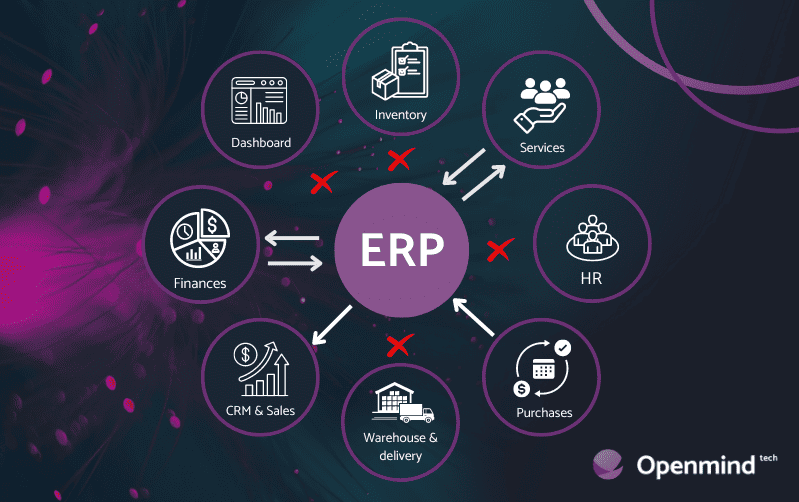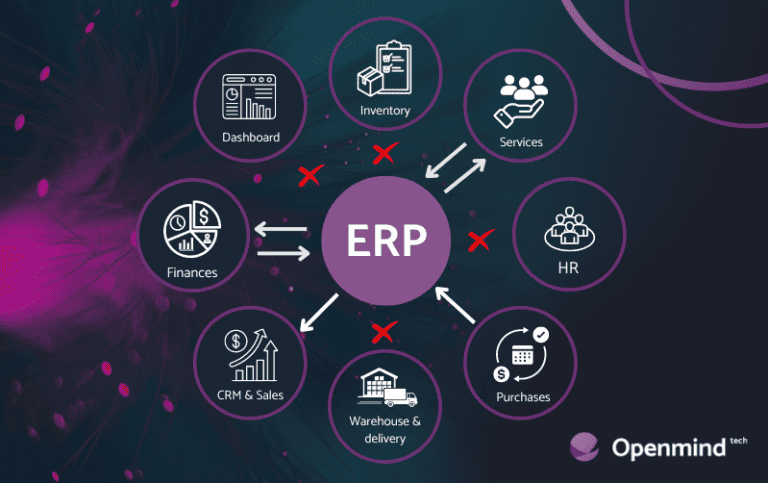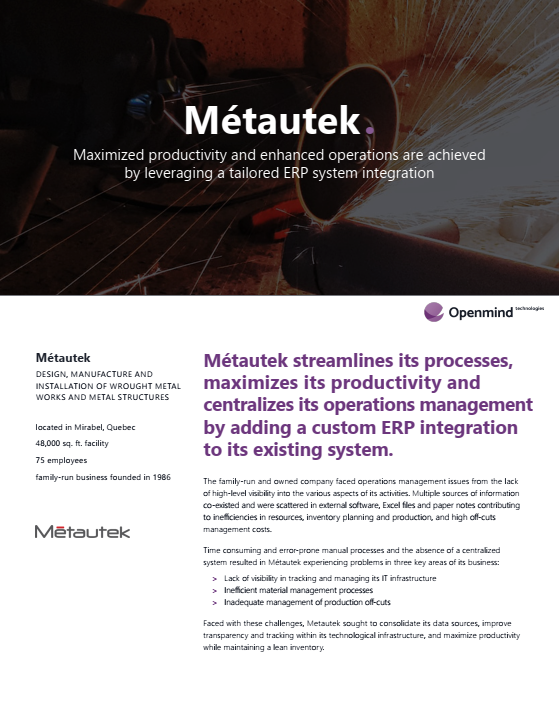Métautek’s Integration Success
Discover the full story of operational optimization through tailored ERP enhancement

In today’s fast-paced business environment, having an efficient Enterprise Resource Planning (ERP) system is critical. Yet, over time, even the best ERP systems can struggle to keep up with evolving business needs, leading to inefficiencies and missed opportunities. ERP optimization is the key to bridging this gap, enabling companies to enhance their systems without the need for a costly overhaul.
In this article, we’ll explore what ERP optimization is, why it matters, and how it can deliver transformative benefits for your organization.
ERP optimization involves fine-tuning your system to align with your company’s processes and goals. This means customizing features, improving performance, integrating new modules, and addressing inefficiencies, all while maximizing the value of your existing ERP investment. The goal is to keep your system agile, efficient, and capable of supporting long-term growth.
By optimizing your ERP, you can tailor it to specific needs like:
A non-optimized ERP system leads to inefficient processes, fragmented activities and obstacles to the integrated management of company operations.


Is your ERP system holding your business back? Here are some common signs that it may be time for optimization:
By addressing the issues of intuitiveness and refining modules related to quoting, estimating, planning, scheduling, and inventory management, businesses can unlock the full potential of their ERP systems, fostering smoother operations and better adaptability to evolving needs.
Optimizing your ERP system requires a structured approach. Here’s a step-by-step guide:

Discover the full story of operational optimization through tailored ERP enhancement

Investing in ERP optimization delivers tangible benefits for your business, including addressing hidden costs associated with technical debt:
Technical debt plays a significant role in the effectiveness of ERP systems. Over time, outdated customizations, obsolete code, and poorly integrated features can lead to increased maintenance costs, slower innovation, and operational inefficiencies.
Addressing technical debt through ERP optimization involves:
This approach not only reduces risks but also ensures your ERP system remains reliable, scalable, and aligned with your evolving business needs.
ERP optimization isn’t just about fixing problems—it’s about unlocking the full potential of your system to drive growth and competitiveness. Whether you’re aiming to improve operational efficiency, enhance data accuracy, or future-proof your business processes, optimizing your ERP can deliver a strong return on investment.
Incorporating modernization into ERP optimization takes this even further.
Modernizing your ERP doesn’t mean starting from scratch—it involves upgrading legacy components, integrating new technologies, and ensuring your system can support evolving business needs. This proactive approach allows you to stay ahead in a competitive landscape, leveraging the latest advancements while retaining the familiarity of your current system.
Instead of waiting for your ERP system to become obsolete, take proactive steps to enhance and modernize its capabilities today.
Subscribe to receive our exclusive updates directly to your email.

Tell us more about your needs so that we can better route your project to our specific SWAT team.
1
During the brainstorming phase, we work with you to identify potential solutions to your business challenges to generate the technology response that aligns with your business objectives.
2
Through our requirements gathering process, we work closely with you to define and prioritize your needs, ensuring that our solutions are tailored to meet your specific requirements.
3
This phase marks the beginning of our partnership. We’ll finalize the project plan and establish clear communication channels to ensure a smooth and successful project execution.